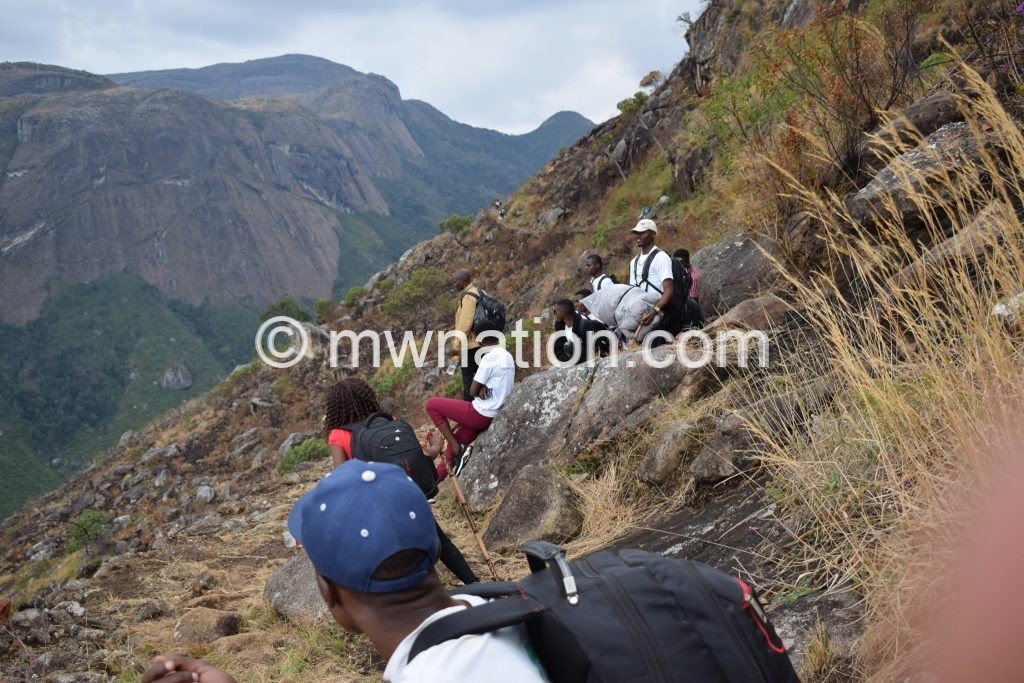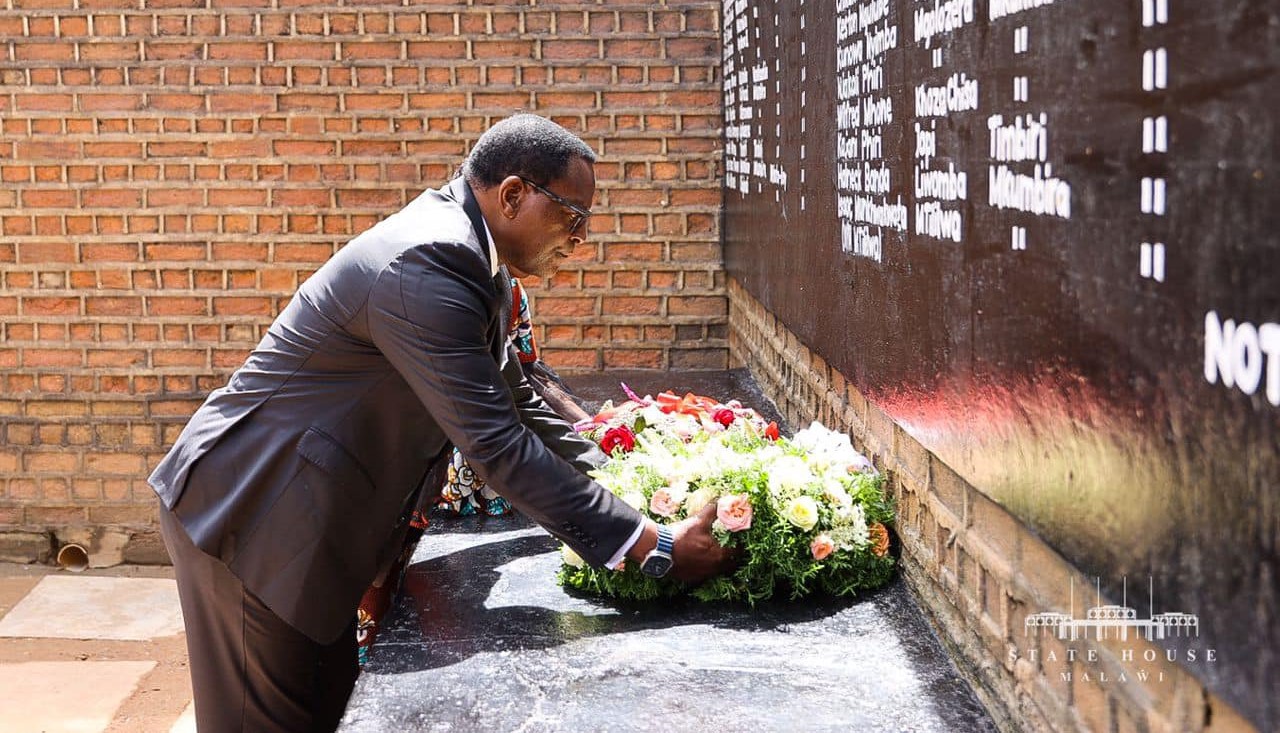A Sapitwa journal
Stories of the mysteries of Mulanje Mountain have been a part of the Malawian life. We have all heard narratives of ancestral spirits taking up those who do not follow the unwritten laws guiding the mountain, of rice with chicken you have to eat without inviting your friend and bananas you have to eat on the mountain, never take home.
When I joined 23 other hiking enthusiasts brought together by the Youth Hub (a Machinjiri-based organisation on the environment, youth development and social interaction) on a hike up the mountain, it was neither to prove nor disprove any of those stories. The matter was settled during previous hikes to the Chambe Hut which is at 1 100 metres above sea level and Lichenya at 1 700, where these occurrences were not part of the fun.

So, joining the Mulanje Mountain Challenge was for one purpose: To reach Sapitwa, the highest point in southern central Africa, at 3 002 metres above sea level. Sapitwa epitomizes the mysteries of the mountain, fondly called The Island in the Sky.
It was around 9am when the trek began, at the foot of the mountain, Likhubula. The tour brought together mostly amateur but enthusiastic hikers from diverse professional backgrounds: Accountants, nurses, auditors, teachers, students, caterers and environmentalists.
The youngest in the group was 17-year-old Chimwemwe Kapito, while the oldest was Osborne Ngwali, who turns 51 later this month. Five of the hikers were female.
From around 9, the hikers began the trail to Chisepo Hut, which is pegged at 1 800 metres above sea level. The hut is one of the 10 huts in the Mulanje Massif, and is closest to Sapitwa. To reach the hut, the hikers that Friday spent between six and eight hours using the Skyline Path.
It is a trek that is characterised by muscle wrenching steep slopes and overwhelming heat that is intensified with massive deforestation. However, that was compensated with breath-taking views and cool water from natural springs at certain points during the climb.
Along the way, the guides pointed out some of the interesting features on that side of the mountain, like the Chambe Peak, a massive rock which is the highest rock wall in Africa. It is very hard to climb, as attested one of the guides Joseph Mwago, that once you slip, your dead body would be found in the villages miles below.
Past Chambe, Mwago also showed us a spot where the Dutch hiker Linda Pronk is believed to have fallen in September 2003 when she tried to scale up the mountain alone. He also showed us where in July 2009 a Brazillian backpacker Gabriel Buchmann missed the path from Sapitwa to Chisepo only to be found frozen in a cave, having lost his way. Chilling as they are, these two stories make you know the great part of your life guides hold on the mountain.
A night at the Chisepo Hut was to prepare the devotees to the hike to Sapitwa the following morning. For some, like me, it was a difficult night thinking of the task ahead. The thought running through my mind was that I would not make it. Mainly, that was because of what the chief guide, Helix, said.
“Sapitwa is no joke. Most of the hike, you will crawl on all fours on rocks. If you fall, everyone else will fall with you. If you fall alone, it will take some time for help to come your way because we will have to seek for a spot where there is a phone network to call for help at the foot of the mountain,” he said.
Then, he added: “Sapitwa is very steep.”
“If you compare with the Boma Path, which is steeper?” I, for one, asked.
“Sapitwa is steeper,” he replied.
That brought more fears to me. During one descent from Lichenya, we used the Boma Path. It is very steep that you have to drag yourself down in a sitting position for close to seven hours before reaching Mulanje Boma.
“Those who feel they won’t make it to Sapitwa, we can just go up to some point and you will get pictures and return,” Hilex affirmed.
It is rather funny that of all the hikers, only two returned before reaching Sapitwa. That part of the hike presented pleasantly sites. Hard as the climb is, it brings beautiful sites of Phalombe, Zomba and Mulanje. Early in the morning, we were told, you can see as far as the Indian Ocean.
The rocks towards Sapitwa show you God’s handiwork. At one point, you find rocks formed as rabbit ears; at another you find the V-Cave, which trends on social media and yet at another spot, you find a sofa set naturally formed from rocks.
The summit that Saturday morning was extremely cold, with temperatures dropping below 10 degrees celcius. When we were leaving Chisepo three hours earlier the sun was up the sky. With the cold, it was only for 15 minutes that the hikers were at the summit. It was a quarter of an hour of ecstacy. The fog could not dampen the high spirits the hikers felt.
“It is a great experience. It is painful and dangerous that I could not tell my parents I was coming here. Yet, reaching Sapitwa is a thing I would do again given the chance,” said Atupele Chaponda, who led the team.
Another hiker, Lulanga Panje, summed it up: “Hiking is not just about fitness, we hike with our body, mind and soul. Hiking gives us the opportunity to reflect while at the same time building our bodies.”
Youth Hub patron Humphrey Kapito said the group organises the Mulanje Mountain Challenge annually but this was the first time to go to the highest peak.
“Apart from the fun and adventure, this presents an opportunity for us to appreciate nature and be aware of the importance of caring for the environment,” said Kapito.





